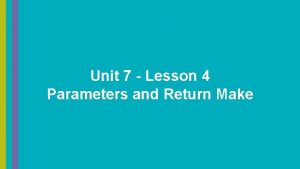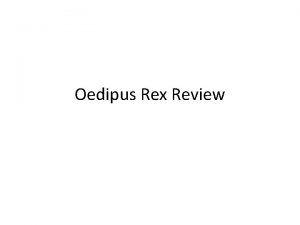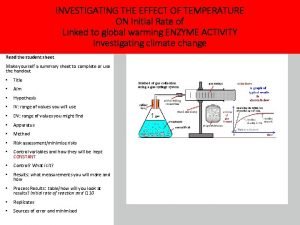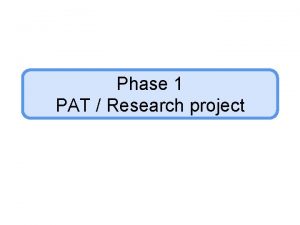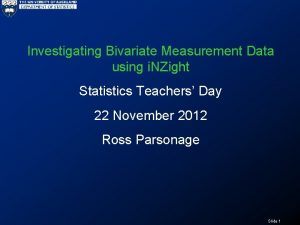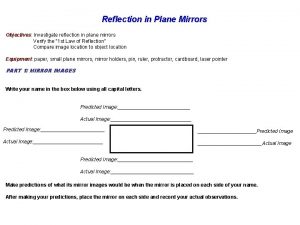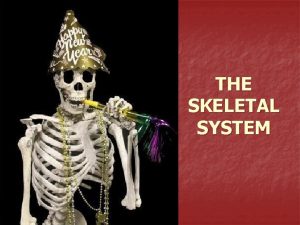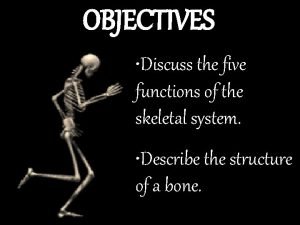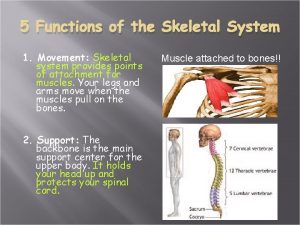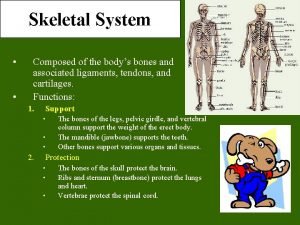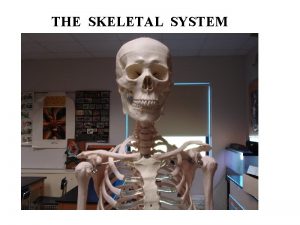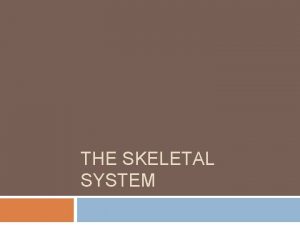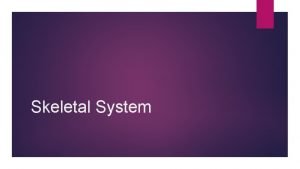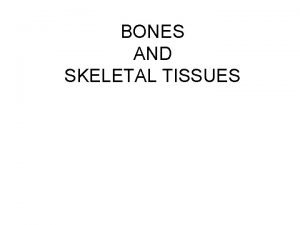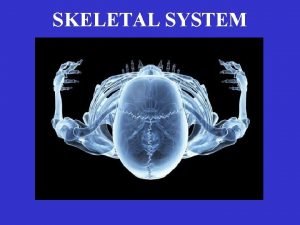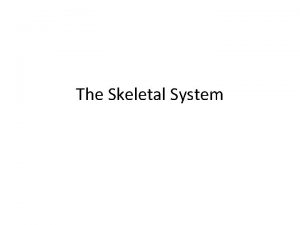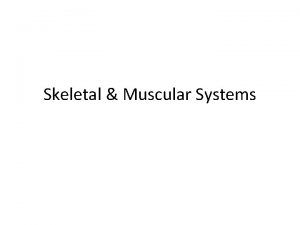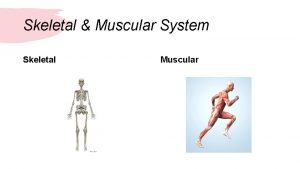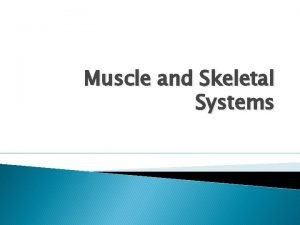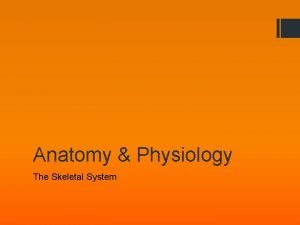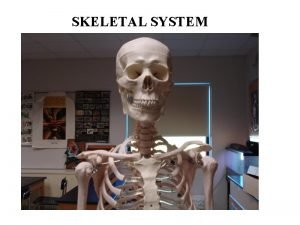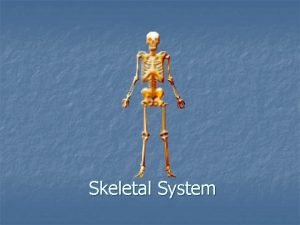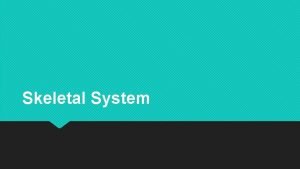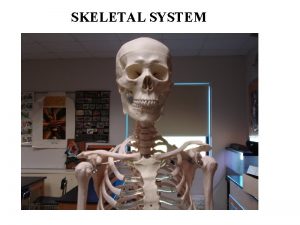Students will investigate the functions of the skeletal






















- Slides: 22

Students will investigate the functions of the skeletal system and identify the parts. http: //educationalminimovies. co m/index. php? option=com_conte nt&view=article&id=632: schoolho use-rock-skeletalsystem&catid=344&Itemid=55 Students will describe the functions of the skeletal system and deconstruct the system to describe the function of its parts.

Brain pop Bone photos http: //homes. bio. psu. edu/people/faculty/stra uss/anatomy/skeletal. htm Build a skeleton game Virtual Skeleton http: //www. medtropolis. com/VBody. asp Students will describe the functions of the skeletal system and deconstruct the system to describe the function of its parts.

Support Students will describe the functions of the skeletal system and deconstruct the system to describe the function of its parts.

Motion • walking skeleton Students will describe the functions of the skeletal system and deconstruct the system to describe the function of its parts.

Protection video Students will describe the functions of the skeletal system and deconstruct the system to describe the function of its parts.

Produce Blood Cells Students will describe the functions of the skeletal system and deconstruct the system to describe the function of its parts.

Produce Blood Cells Students will describe the functions of the skeletal system and deconstruct the system to describe the function of its parts.

Hearing Students will describe the functions of the skeletal system and deconstruct the system to describe the function of its parts.

Regulate Calcium Salt Students will describe the functions of the skeletal system and deconstruct the system to describe the function of its parts.

Students will describe the functions of the skeletal system and deconstruct the system to describe the function of its parts.

Students will describe the functions of the skeletal system and deconstruct the system to describe the function of its parts.

Students will describe the functions of the skeletal system and deconstruct the system to describe the function of its parts.

Finish the analogy • If my body were a city, the skeletal system would be the ___________ because ______________________________________. Students will describe the functions of the skeletal system and deconstruct the system to describe the function of its parts.

Do now: • Observe the cross section of the bone. • Does it have different parts? • Think about the functions of the skeletal system – which parts of the bone in front of you are responsible for each job? • How do bones contribute to keeping our bodies alive? Students will describe the functions of the skeletal system and deconstruct the system to describe the function of its parts.

Bones are made up of different layers • Outer Membrane: thin and tough, it covers all of the bone except the ends Blood vessels and nerves enter and leave the bone through the membrane • Compact Bone: hard and dense but not solid Small canals carrying blood vessels and nerves from the bone’s surface to the living things within the cell. Blood vessels and nerves run through the compact bone • Spongy Bone: lightweight and strong Located just inside the compact bone and also found at the ends of the bone Like a sponge, spongy bone has small spaces within it Bone Marrow-soft connective tissue found in the spaces in bone Two types of bone marrow: • Red marrow-produces blood cells • Yellow marrow-stores fat that serves as an Students will describe the functions of the skeletal system and deconstruct the system energy reserve to describe the function of its parts.

Do Now • We learned that your bones are hard and have a hard protective layer called compact bone. It doesn’t bend. So how does your body move? • What are different ways your body bends? With your elbow buddy, demonstrate the different motions that your body can bend. Feel the motion of your bones as you swing your arm in a circle, push your pencil, lift a book, turn your head. Students will describe the functions of the skeletal system and deconstruct the system to describe the function of its parts.

Joints of the Skeleton A Joint is a place in the body where two bones come together Joints allow bones to move in different ways. There are two kinds of joints in the body: Immovable Movable Immovable joints connect bones in a way that allows little or no movement Ex: the bones of the skull are held by immovable joints the ribs attach to the sternum by immovable joints Movable joints allow the body to make a wide range of movements Students will describe the functions of the skeletal system and deconstruct the system to describe the function of its parts.

gliding Joints animation Manipulate joints game http: //www. phschool. com/atschool/phsciexp/ Students will describe the functions of the active_art/skeletal_and_muscular/index. html skeletal system and deconstruct the system to describe the function of its parts.

Four Types of Movable Joints Ball and socket joint-allows the greatest range of motion • Lets you swing your arm and leg freely in a circle • Located in your shoulder and hips Pivot joint-allows one bone to rotate on top of another • Lets you turn your head from side to side • Located in the top of your neck Gliding joint-allows one bone to slide over another • Lets you bend and flex your wrist and make limited side to side motion • Located in your wrists and ankles Hinge joint-allows forward and backward motion • Lets you bend and straighten your arms and legs • Located in your elbows and knees • Manipulate joints game rap: http: //www. youtube. com/watch? v=a. RXv 3 q. Ol 8 -4 • http: //www. bbc. co. uk/science/humanbody/interactives/3 djigsaw_0 Students will describe the functions of the 2/index. shtml? skeletonskeletal system and deconstruct the system to describe the function of its parts.

Reflection: • The knees and hips are similar to the arms and shoulders. Which is the hinge joint and which is the ball and socket? • Why would a ball and socket joint in your knees create problems for walking? Students will describe the functions of the skeletal system and deconstruct the system to describe the function of its parts.

Students will describe the functions of the skeletal system and deconstruct the system to describe the function of its parts.

Cranium, scapula, patella and tarsels eyes cartilage mandible cartilage Cranium, scapula, patella and tarsels Quia Games Build a skeleton game United Streaming Human Body for Students Skeletal system http: //player. discoveryeducation. com/index. cf m? guid. Asset. Id=D 02 CF 318 -0 D 0 B-4643 -B 00 D 571 AE 941 ED 18&bln. From. Search=1&productco Students will describe the functions of the de=US skeletal system and deconstruct the system to describe the function of its parts.
 Lesson 4 parameters and return make rock paper scissors
Lesson 4 parameters and return make rock paper scissors What is the priest doing at the beginning of the play?
What is the priest doing at the beginning of the play? Inital rate
Inital rate How to investigate a problem
How to investigate a problem Investigate bivariate measurement data
Investigate bivariate measurement data Investigate reflection
Investigate reflection Five functions of the skeletal system
Five functions of the skeletal system What are the five functions of the skeletal system?
What are the five functions of the skeletal system? 5 functions of skeletal system
5 functions of skeletal system 5 functions of skeletal system
5 functions of skeletal system 5 function of skeletal system
5 function of skeletal system Function of muscular tissue
Function of muscular tissue Coronal suture
Coronal suture Interno rizal
Interno rizal Piecewise functions absolute value
Piecewise functions absolute value How to solve evaluating functions
How to solve evaluating functions Evaluating functions and operations on functions
Evaluating functions and operations on functions Hình ảnh bộ gõ cơ thể búng tay
Hình ảnh bộ gõ cơ thể búng tay Lp html
Lp html Bổ thể
Bổ thể Tỉ lệ cơ thể trẻ em
Tỉ lệ cơ thể trẻ em Voi kéo gỗ như thế nào
Voi kéo gỗ như thế nào Tư thế worm breton
Tư thế worm breton
